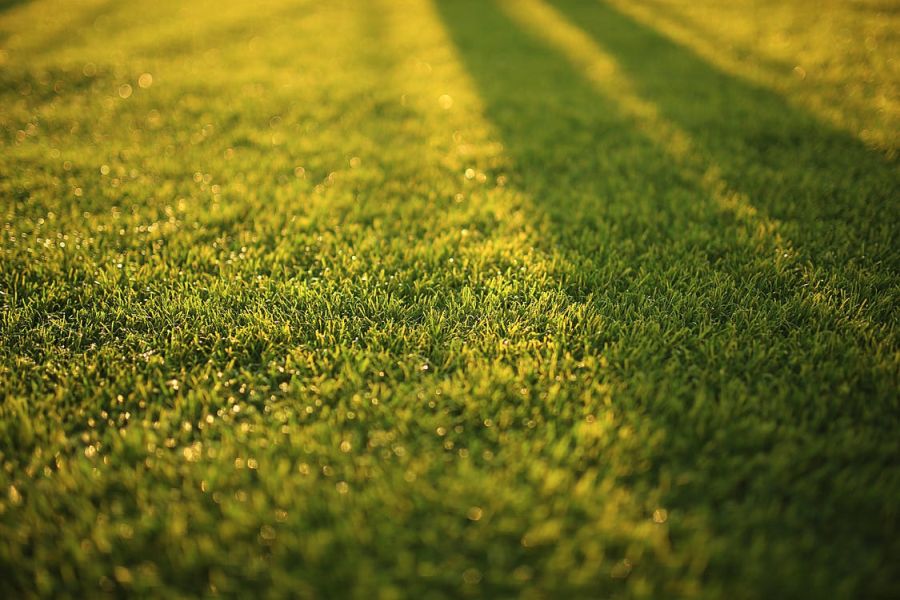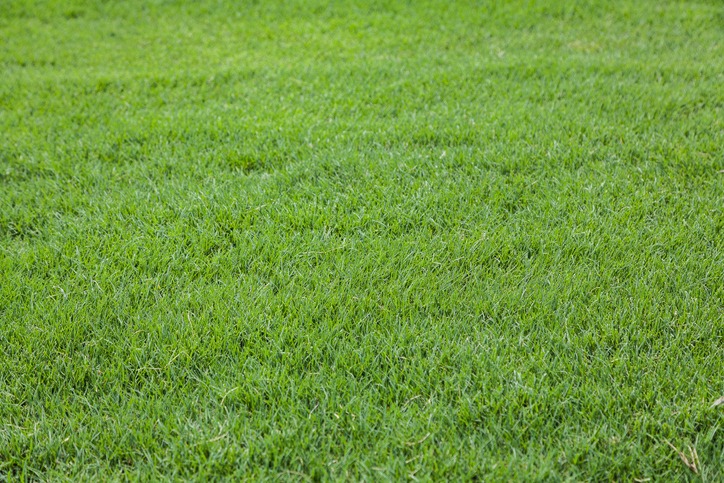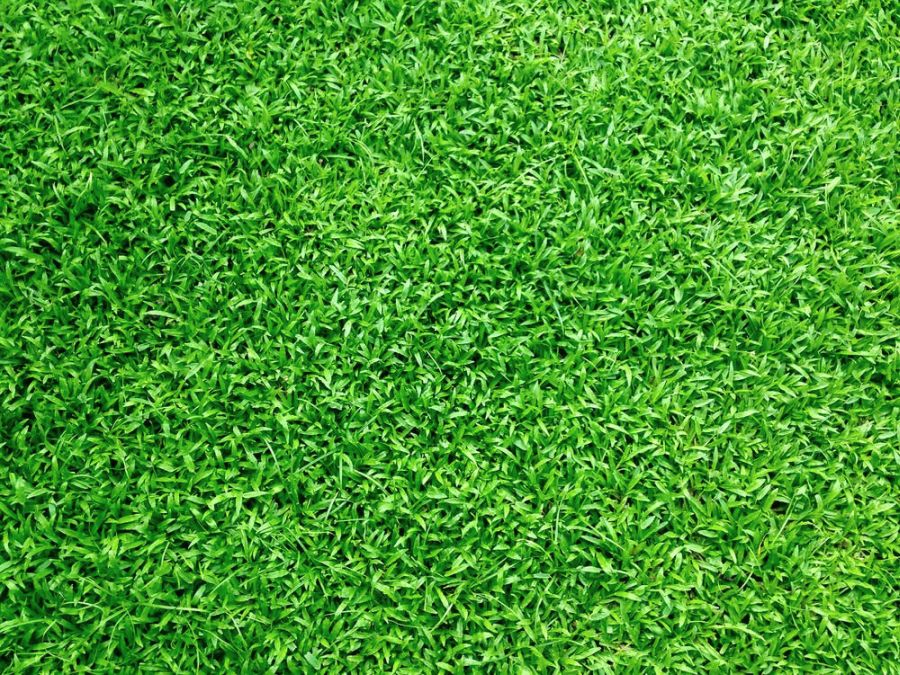Owning and maintaining a lawn shouldn’t be a difficult task for you. Lawns are pretty low maintenance; all you need to do regularly is to mow and fertilize them. If you are spending a lot of time on your lawn’s upkeep, you likely don’t have the right type of grass.
There are different types of grass, which are suitable according to the climate of the region. With healthy soil, a little rain, and sunshine, the right grass for a particular country’s region can thrive longer.
Since there is a long list to choose from, some even prefer to plant a mixture of two or more types. For your understanding, we have divided the turf-grass into two broad categories according to the season, i.e., warm-season grasses and cool-season grasses.
Warm Season Grasses
If you live in the Southern, South-eastern, and Gulf Coast regions with a warm climate, you can choose from the list of these five kinds of grass.
St. Augustine
With coarse, wide leaves and rounded tips, this grass is a slowing growing variety. It is very popular on the Gulf Coast, especially Florida, due to being heat resistant and extremely resilient. You may have to water it often, but it can even survive heavy rains, which are common in the Southeastern region. It is grown in sandy soil and, despite being soft, can stand heavy foot traffic.
Zoysia Grass
If you’re looking for grass that’s indestructible and needs low maintenance, then Zoysia grass is the one for you. The grass needs very little care and shares a few characteristics with St. Augustine. The texture of the grass can be fine or coarse, which some people find prickly underfoot.
While this warm-season grass welcomes heat and even drought, it grows well even in cool temperatures and partial shades. Though it has slow growth and you will have to wait for quite a long time to establish itself, it will be very firm once it is established.
For more information, check our article on Zoysia Grass and How to Care for It.
Bermudagrass
Bermudagrass has a vibrant root system with rhizomes and stolon spreading below and above the ground. This makes the lawns look denser and thicker. With dark green pointed leaves, you can cut it very short; therefore, not requiring mowing the lawn too often. However, it would be best if you watered it frequently.
Bermudagrass may require relatively less specialist care to flourish, but you need to ensure that it gets good sunlight. This can work best for you, and the grass will grow faster if you have the right conditions. Bermudagrass is also comparatively less expensive.
For more information, check out the article on Bermudagrass and How to Care for It.
Bahiagrass
This all-purpose, warm-season grass is resistant to insect attacks, drought, and disease than any other warm-season grass. Bahiagrass belonging to the Paspalum family (containing noxious weed) can survive in any soil type – be it sandy, clay, or even infertile dry-soils.
The grass doesn’t need to be maintained regularly; however, it can be challenging to mow due to its tough stems. This is used extensively in coastal areas with warm weather. It is likely to go semi-dormant during the winter season, but people water it frequently and fertilize it to keep it green when the weather is cold.
For more information, check out our article on Bahiagrass and How to Care for It.
Centipede Grass
Centipede grass is a slow-growing but aggressive grass that grows best in a little acidic water. The grass doesn’t need much specialist care; however, it can be destroyed easily with heavy foot traffic. While it grows fine under the shade, it flourishes even better in the sunlit areas.
Where other types of grasses are most likely to struggle, centipede grass can prosper in such areas too. It is popular because of its ability to survive in low fertility conditions with low maintenance.
For more information, check our article on Centipede Grass and How to Care for It.
Carpet Grass
This one is another low maintenance grass that grows exceptionally well in wet soil. You will see carpet grass mostly in parks and many lawns, as it can survive heavy foot traffic. Areas that are shadier and allow moisture to be held longer are perfect for carpet grass.
It is a perennial, creepy grass with coarse leaves. Moreover, it resembles St. Augustine and Centipede grass but is relatively less tolerant to shade. You can easily plant the grass using seeds or sprigs. The Carpet grass can withstand higher traffic than many other types of grass in this category. However, one major disadvantage of it is its rapid seed-head production.
For more information, check out the article on Carpet Grass and How to Care for It.
Cool Season Grasses
Cool-season grasses prosper best in the region with cold winters and extensive temperature fluctuations, such as Northeast, Pacific Northwest, and upper Midwest. There are four main types of cool-season grasses that we have discussed here.
Bentgrass
Bentgrass is a high maintenance grass that requires constant attention. Originally, it was cultivated to be used for golf course greens. Though it can grow in a cooler environment, it cannot survive extreme conditions like cold winters or extremely hot summers.
If you’re ok with mowing your lawn too frequently, then you can plant bentgrass. However, it is not made to be used in homes, unless you don’t mind mowing it every day at 1″ or your house is built on a golf course green.
For more information, check our article on Bentgrass and How to Care for It.
Kentucky bluegrass
Kentucky bluegrass is probably the best known and most commonly used grass in the cool season. It is popular because of its cold-hardiness and green-blue color. This grass allows you to create a high-quality lawn without the need to pamper it a lot.
Kentucky bluegrass needs well-drained soil and sunshine to blossom, and it can even grow well under low shade. However, you must regularly fertilize it and water it frequently. People have been planting it for many years, and it is now available in various blend formulations.
For more information, you can read our article on Kentucky bluegrass and How to Care for It.
Fescue
Fescue grass comes in different species, and most of them grow well under shade. If planted in ideal conditions, the grass can stay green all year without the high maintenance. The fine-leaf fescue is the best for cool seasons and can even bloom in extremely cold conditions. However, as compared to other types of fescue grass, fine-leaf can’t handle heavy traffic.
On the other hand, tall fescue can handle heavy traffic and prospers in fall and spring with low maintenance. It is also drought resistance and considered much better than fine-leaf fescue.
For more information, read our article on Fescue Grass and How to Care for It.
Rye Grass
This type of grass flourishes in areas that receive heavy rainfall. It also needs plenty of sunlight to grow fast. Ryegrass can withstand traffic fairly well. You will see this type of grass, mostly in parks, athletic grounds, and golf courses. It is quite popular in the USA because it proliferates and remains green in ideal conditions.
For more information, check out our article on Rye Grass and How to Care for It.
Wheatgrass
You probably have thought of wheatgrass mainly as a plant that can be juiced for your health; surprisingly, it is also good to be used for lawns. With many winter-hardy varieties, wheatgrass is ideal for the cool season.
Though you may not get the perfect emerald green lawn by planting wheatgrass, it is very tough and can easily tolerate drought. Moreover, it doesn’t need to be watered or fertilized too frequently and can tolerate heavy traffic.
For more information, check our article on Wheatgrass and How to Care for It.
The Choice is Yours
With all this information on common types of grass, we believe it will be easier for you to decide which type would be ideal for your lawn. Its also important to consider your whole yard plan and maintenance and hire great services like Trav’s Trees hedge trimming and others for help. According to the season, traffic, and soil conditions, you can plant the one that would grow well with low maintenance.



